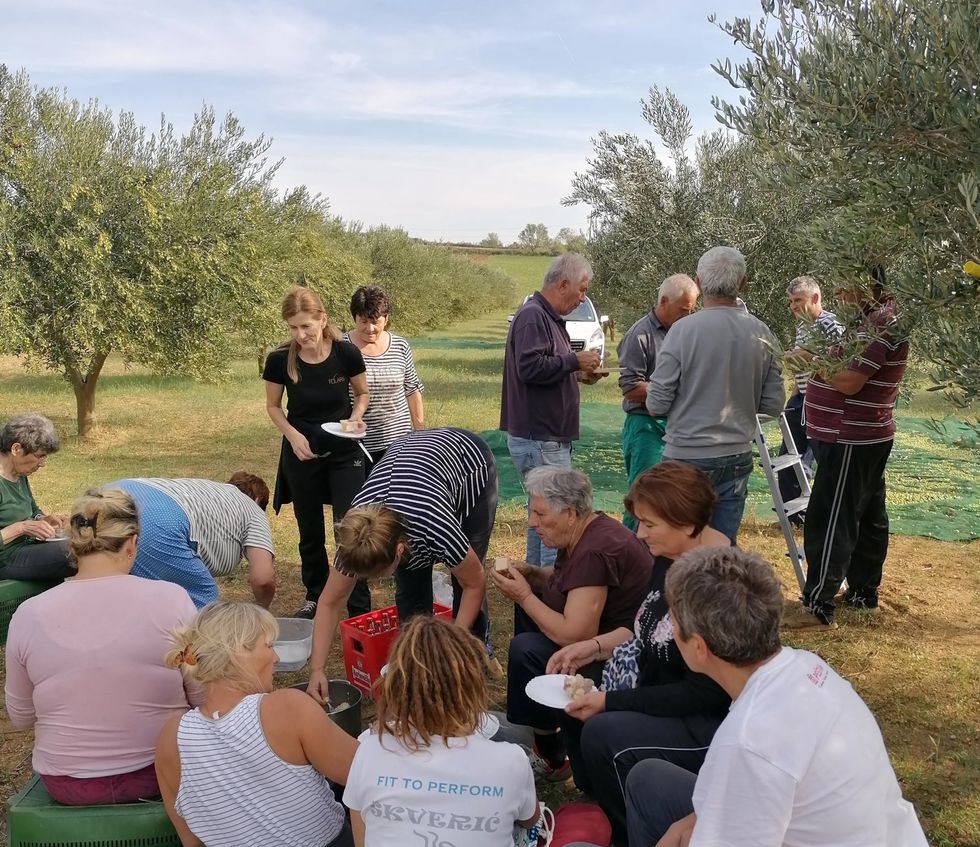Seed oils.
You’ve probably heard they’re really bad, but I bet you don’t know why. If you do, or think you do, I bet it’s because of the disgusting way they’re produced — you may have seen that stomach-turning video of canola oil being made — and the fact that they’re a totally novel form of fat humans have no real history of consuming.
Yet here we are guzzling huge quantities of them in pretty much every kind of processed food you can think of.
Forefather knows best
Seed oils are everywhere now, in large part because they’re cheap to make, but also because we’ve been told, wrongly, that they’re actually much better for us than the fats our ancestors ate since the dawn of time, especially animal fats.
The logic behind that claim — we’ve been eating the wrong fats for 200,000 years until corporations came along and magically gave us the right kind — doesn’t pass a basic sniff test, but there’s also a growing body of scientific research to back up our sensible prejudice.
Everything about this olive oil is authentic, down to the local village men and women who harvest the olives and press and bottle the liquid.
Last week, I talked about the book I consider to be the best book ever written on diet and nutrition, Weston A. Price’s “Nutrition and Physical Degeneration.”
Price makes a simple argument: The transition to modern industrial diets has been a disaster for human health. He was making this argument in 1939, when the very first factory foods like refined-wheat products and canned goods were becoming widespread, many decades before supermarket shelves were filled with the kind of ultra-processed slop we’re familiar with today, like Twinkies and Froot Loops and microwave pizza and Hot Pockets.
A worthless byproduct
Seed oils were one of the first true industrial foodstuffs. Whenever modern humans have eaten seeds, they’ve eaten very small quantities of seed oils, but it required modern machines and chemistry to extract them in large quantities and produce horrible oceans of the stuff: high-pressure mechanical pressing, neutralizing, bleaching, deodorizing, and so on.
One of the first commercial seed oils was crystallized cottonseed oil, which you almost certainly know as Crisco. Oil was extracted at high pressure from cottonseeds and then hydrogenated using a metal catalyst to produce a solid seed-based alternative to animal shortening.
Cotton producers loved this new process, because it made a worthless byproduct of cotton manufacturing into a valuable commodity. What was once fit only to thin paint and lubricate machinery (if not just thrown away) became something people would stick in their mouths and eat.
When I put it like that, it sounds kind of evil, and I suppose it is. We really shouldn’t be eating this stuff.
Soy-faced
I won’t bore you too much with the science of seed oils. You can look it up, if you want to: why polyunsaturated fats — the main constituent of seed oils, and especially so-called omega-6s — are toxic and how the manufacturing process makes these fats even more so; the way seed oils interfere with the metabolism and make us put on weight, as well as their tendency to have estrogenic effects.
 Delbert Shoopman/NBCU Photo Bank/NBCUniversal via Getty Images
Delbert Shoopman/NBCU Photo Bank/NBCUniversal via Getty Images
I’ll mention one set of findings, though, before I move on. A 2020 study of soybean oil (the most widely consumed seed oil in America) showed that not only did it make mice fat, it also disrupted the same region of the brain — and in a similar fashion — as Alzheimer’s disease.
Soybean oil also interfered with the production of oxytocin, the so-called “love hormone,” which governs social interaction and bonding. I recently suggested on X that maybe the reason everyone in America is so tense these days is because they eat a thousand times more soybean oil than they did a century ago. I wasn’t joking.
Crushing it
So what about olive oil? I often get asked this. Is olive oil a seed oil? No, it isn’t. Olive oil is a fruit oil, actually. And while it contains some polyunsaturated fatty acids like seed oils, it mostly contains monounsaturated fatty acids, which are different in important ways, most notably their stability.
The extraction process is simple and non-toxic — literally, you just crush olives. What’s more, olive oil contains a wonderful array of unique plant compounds with some pretty miraculous effects.
Maybe the simplest way to understand what’s so good about olive oil, beyond its delicious taste, is to note that it’s been consumed for thousands of years, and those people who consume lots of it, like the Italians, display remarkable longevity, vim, and lust for life.
When it comes to beneficial health effects, science is showing there’s virtually nothing olive oil can’t do. Here’s one study that shows olive oil helps your body produce more testosterone, by allowing the testes to absorb more cholesterol. Here’s another that shows consuming three tablespoons of olive oil a day slows physical aging. And here’s one that shows how a compound in olive oil called hydroxytyrosol helps you to lose weight. Magic.
The good stuff
One of the main problems with supermarket olive oils is quality. You get what you pay for, and the bargains are often adulterated: cut, like cheap drugs, with inferior substances. That means seed oils. This is a problem you get with other oils too, perhaps most notably the hipster and keto dieter’s favorite, avocado oil. A study from a few years back showed that 82% of avocado oil sold in the US was rancid or adulterated.
Here’s a solution: Accept that you’re going to have to pay if you want a good product, and then go straight to the source.
 Selo Olive
Selo Olive
I go to Croatia for my olive oil. Not literally, but you know what I mean. My friend Martin Erlic founded Selo Olive on his family plantation in Dalmatia during the pandemic. Everything about this olive oil is authentic, down to the local village men and women who harvest the olives and press and bottle the liquid while they sing their local songs and laugh and joke in that inimitable Mediterranean way. “Selo” means “community” or “village” in Croatian, and it takes a community to make Selo’s olive oil.
When I got my first bottle of Selo, I couldn’t believe the difference from every other olive oil I had ever tried.
The color, the aroma, the consistency — and of course the taste. This is the real deal. I don’t think I could ever glug anything else on a Greek salad or grilled sardines or make a delicious olive-oil bulletproof coffee with an inferior brand that hadn’t been hand-picked by grizzled babushkas.
Once you visit the Selo, you won’t ever want to leave.
Click this link for the original source of this article.
Author: Raw Egg Nationalist
This content is courtesy of, and owned and copyrighted by, http://theblaze.com and its author. This content is made available by use of the public RSS feed offered by the host site and is used for educational purposes only. If you are the author or represent the host site and would like this content removed now and in the future, please contact USSANews.com using the email address in the Contact page found in the website menu.




